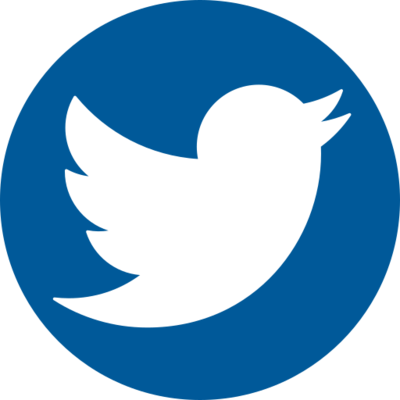
Summary
“Nearly 28.5 million Americans are uninsured or underinsured, leaving them at risk for medical and pharmaceutical costs they may not be able to afford.” To address this issue, pharmaceutical companies have established patient support programs such as the Patient Assistance Program (PAP) to assist individuals who cannot afford their prescription medication or treatment by providing it for free or at a low cost. Without this financial assistance, low-income, uninsured or underinsured individuals will not have the access to the drug treatments they desperately need.
But the patient enrollment process isn’t necessarily a smooth one for the Intake Specialists at the pharma’s contact center or for the Patients. In this post, we will discuss five challenges pharmaceutical manufacturers are facing in managing patient assistance programs and describe how zPaper can reduce their communication cycles with patients, providers, and others to improve patient and financial outcomes by connecting legacy channels to a digital system seamlessly on a single platform.
The PAP enrollment process should be simple and seamless. A typical enrollment program may flow as follows:
A Patient sees a television commercial for a medication that her physician has prescribed. At the end of the commercial, the voiceover mentions a financial assistance program. She immediately calls the number on the screen to seek more information about enrolling in this program. The Intake Specialist Agent speaks to the Patient and emails her the Enrollment Form. To complete the enrollment, the applicant must sign a consent for her doctor to provide the patient’s confidential health information on a section of the form. The physician’s staff then faxes the completed form to the drug company’s call center where the Intake Specialist Agent reviews the documents to determine if all of the information not only has been provided but also and, most importantly, if the patient is eligible for the program. If any information is missing, the Agent must track it down.
As you can see, the collected patient information is stored in a digital format but the inbound and outbound communication channels sharing the information are not, which can lead to operational challenges.
The Top 5 Challenges for Pharmaceutical Manufacturers Face with Patient Support Programs
- Disconnected Data and Document Processing - With traditional document-sharing channels such as email and fax, the Intake Specialist Agent and Case Manager perform disconnected steps, as described above, to capture specific documents and data from applications, insurance cards, prescriptions, etc. The Agent must diligently track the requests to ensure the information is gathered in a timely manner. The high volume of these inbound paper documents through these various channels leads to a greater chance of losing, misfiling, or misplacing them. The time the Agent or Case Manager spends requesting and collecting them again lengthens the number of days for enrollment. This creates a frustrating intake experience for the patient and delays their access to medical treatment.
- High Margin of Error - Agents and Case Managers manually enter data from fax or scanned documents. Any typos or distractions while entering the patient information can lead to critical errors which could affect the patient’s enrollment or delay the financial aid or the medication.
- Inefficient Use of Case Manager Time and Resources - This gap in the document exchange between legacy and digital systems causes Case Manager to spend more time on administrative tasks instead of focusing on what they are supposed to be doing - patient care. Instead of physically faxing or emailing an acknowledgment letter to an insurance company upon receiving the patient’s insurance card, they should be educating and engaging the patient.
- Maintaining Compliance and Security Standards - The healthcare industry is regulated for a reason – to protect the patients and providers. A fax from a physician’s office intended for the pharma’s contact center can be mistakenly sent to another recipient simply by dialing the wrong number. The patient data contained within that fax is not encrypted or anonymized and could be used for unauthorized purposes, therefore, putting the doctor’s office and patient in a risky situation.
- Accurate Tracking of KPIs and SLAs - The separate intake and outbound channels make it difficult to meet, nonetheless accurately track metrics and key performance indicators.
“zPaper is the bridge between traditional or legacy systems and digital channels,” according to Julian Barrios - VP of Sales & Channel Management at zPaper
To resolve these challenges, zPaper offers a comprehensive channel-agnostic digital document journey specifically for pharmaceutical manufacturers. zPaper’s integrated solution achieves this unified end-to-end document automation journey with Salesforce by digitizing the document management process and utilizing intelligent routing. “zPaper is the bridge between traditional or legacy systems and digital,” according to Julian Barrios, VP of Sales & Channel Management at zPaper. Patient enrollments received by fax can be split into individual pages, classified by document type, associated with the Patient and Provider, and established as a Case in the system without any manual input. On the outbound side, a Case Manager can send out an acknowledgment letter in an approved templated format upon receipt of a physician’s consent by simply clicking on the status of the patient's enrollment in the system. Letters are barcoded and automatically routed to the corresponding Case.
Pharmaceutical contact centers struggle to effectively assist patients that experience challenges with affording prescription drugs/treatments or navigating their insurance. By connecting pharmaceutical manufacturers to patients, providers, and other entities through a digital platform, the Patient Assistance Program enrollment process will significantly improve inefficiencies. It will reduce the enrollment period and the medication turnaround time for the patients as well as help pharma companies reduce operational costs and improve the patient’s satisfaction with the intake experience. Using zPaper, pharmaceutical companies can have a 360º view of the patient’s document journey.
For more information about how zPaper can streamline your workflows in patient service programs, watch this video or contact a zPaper Sales Development Representative to schedule a consultation.













